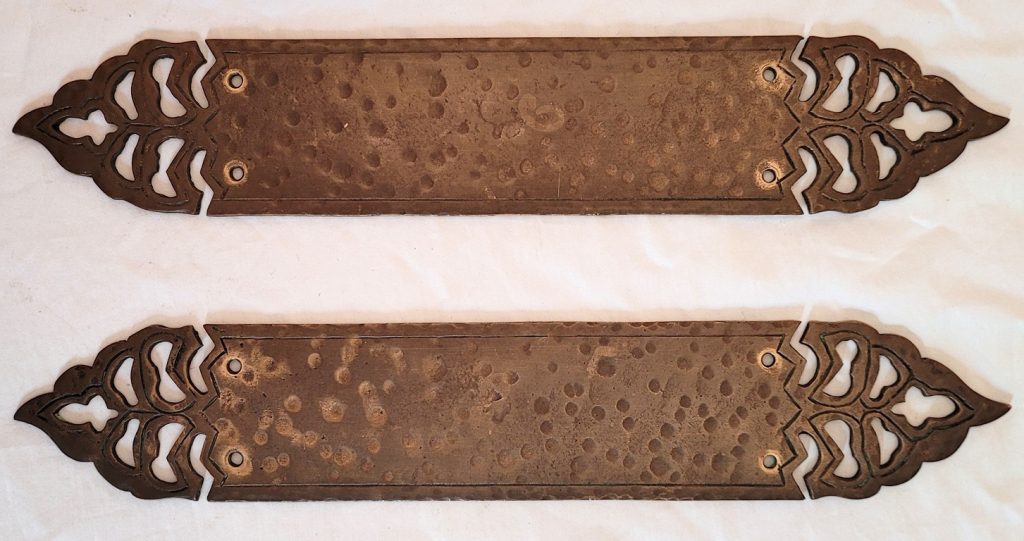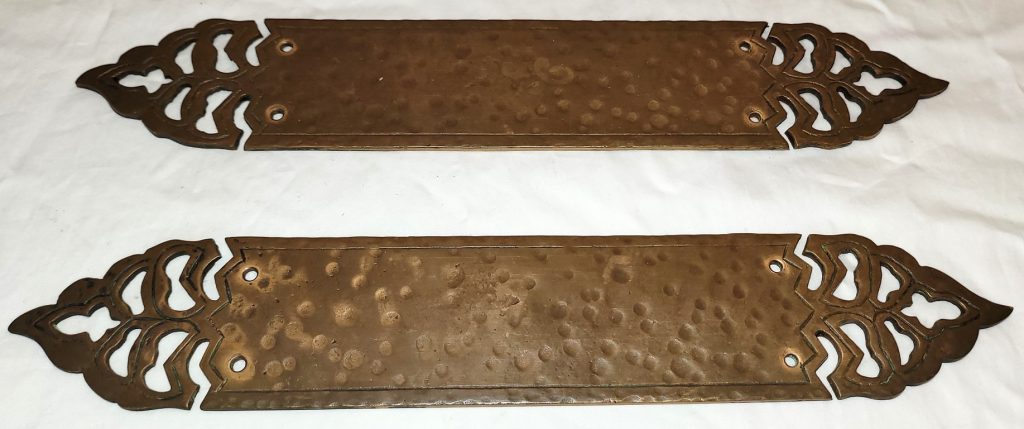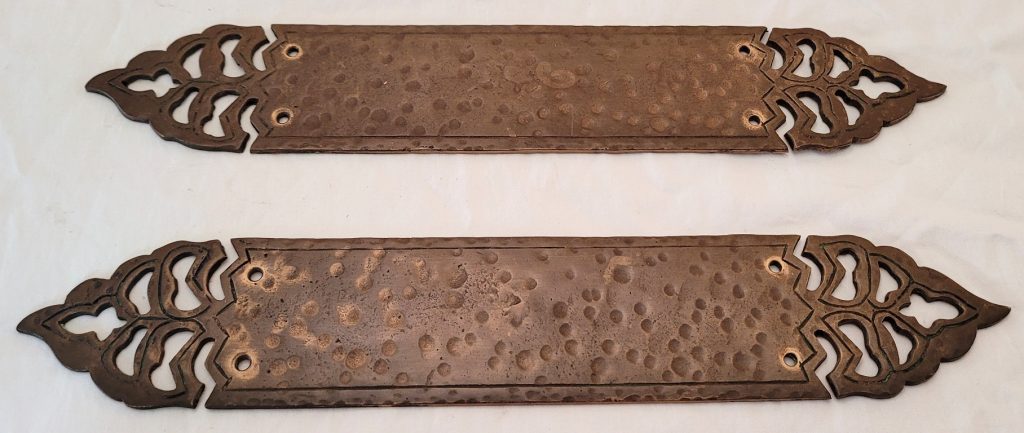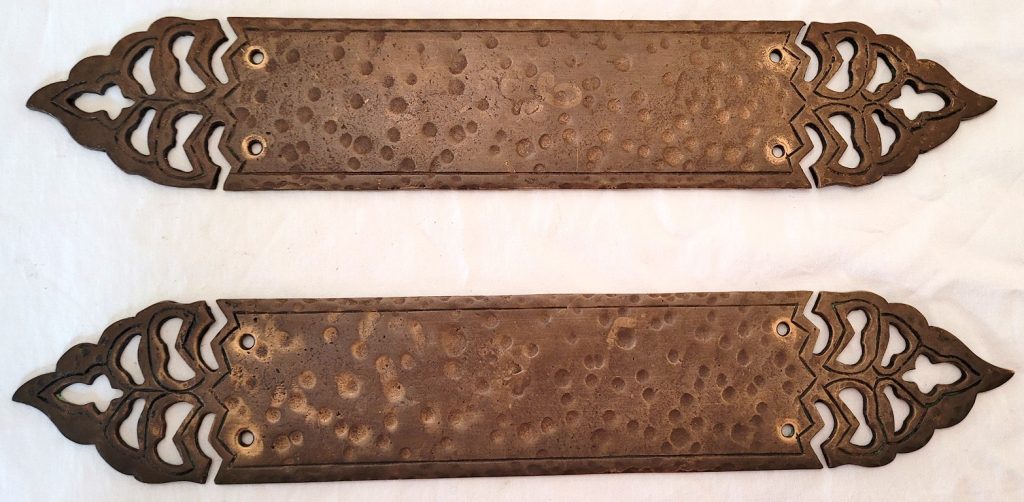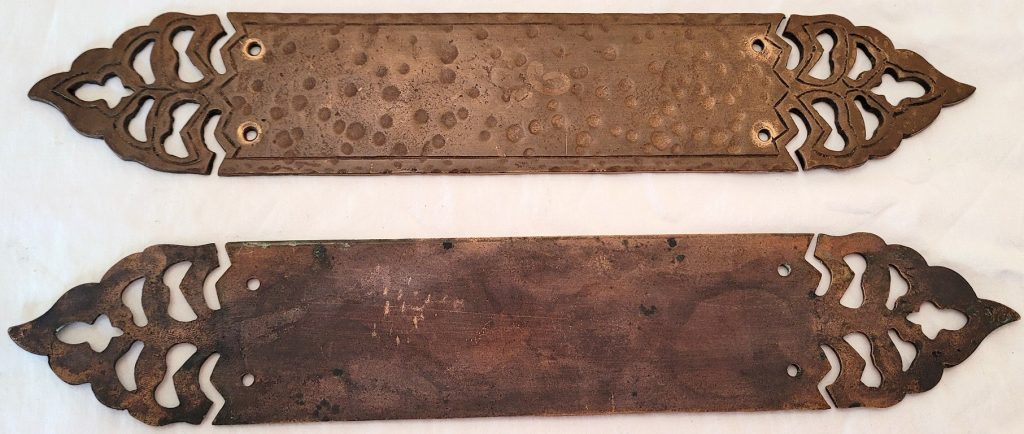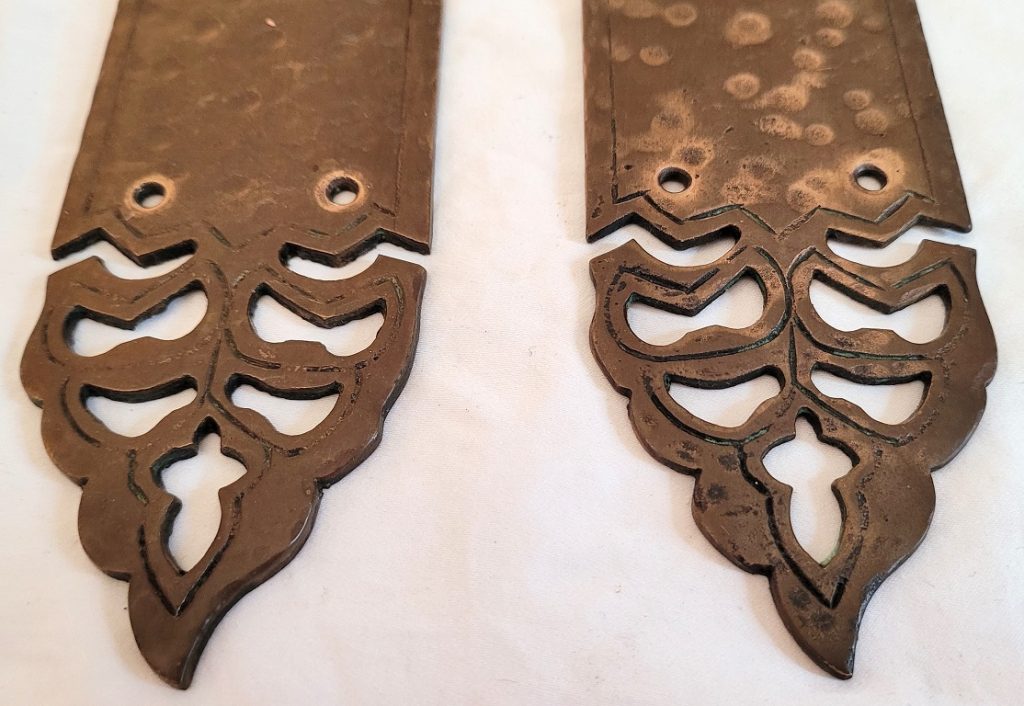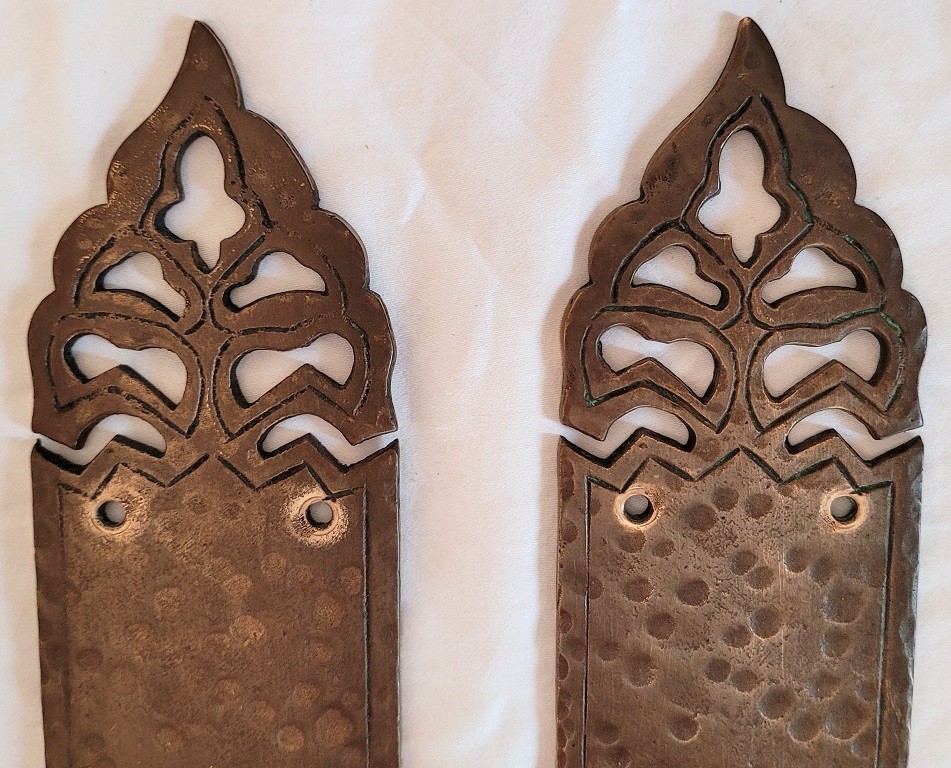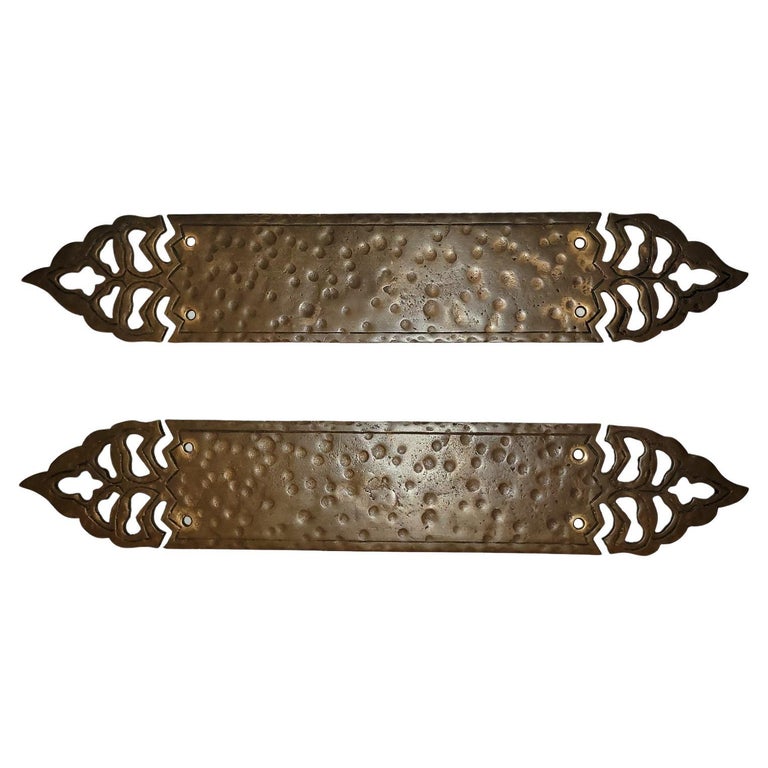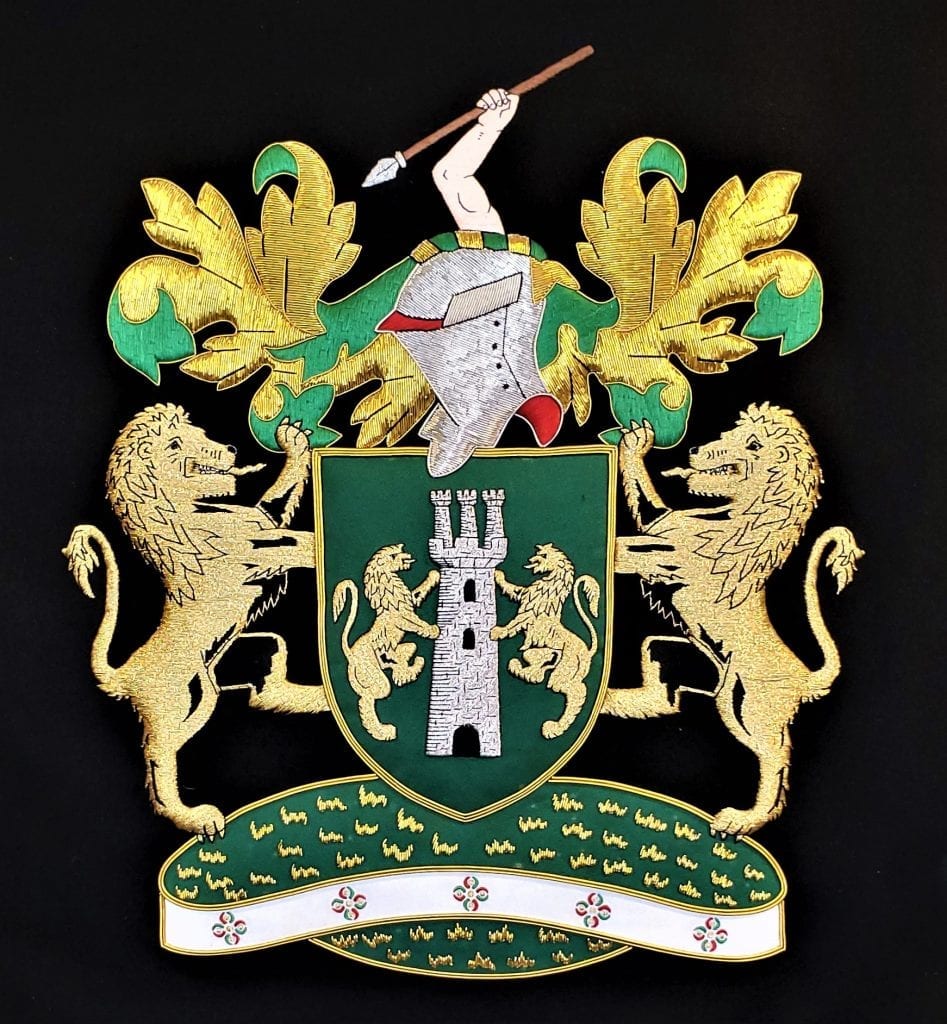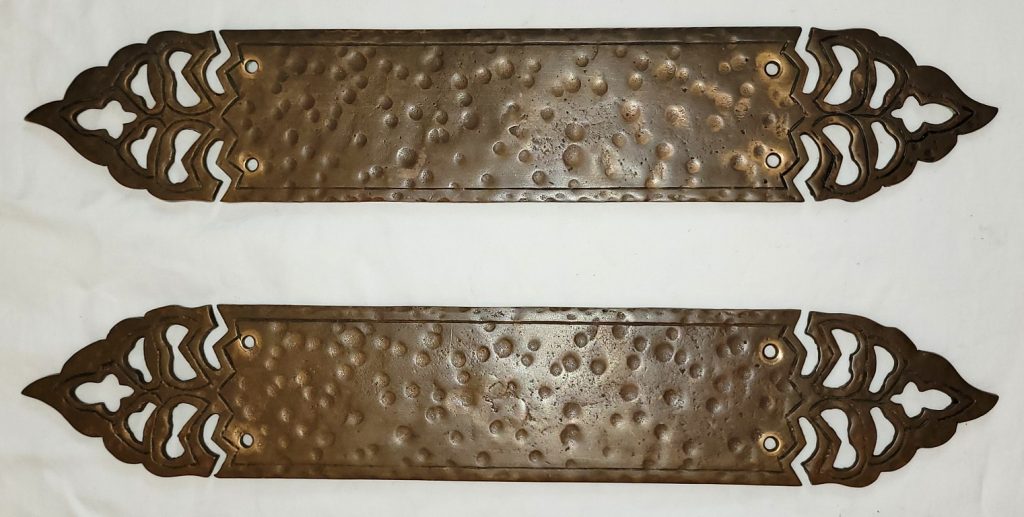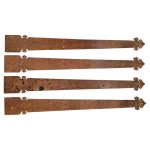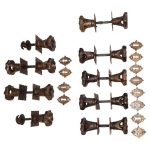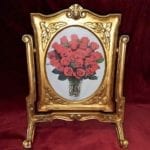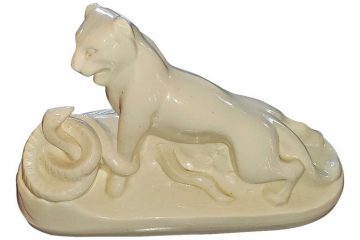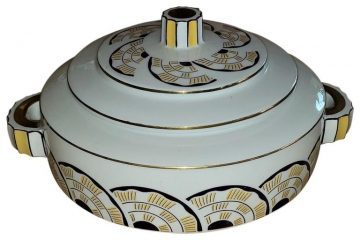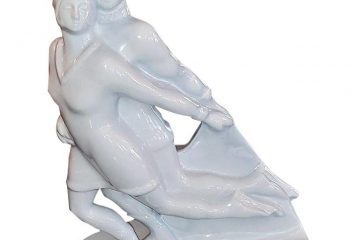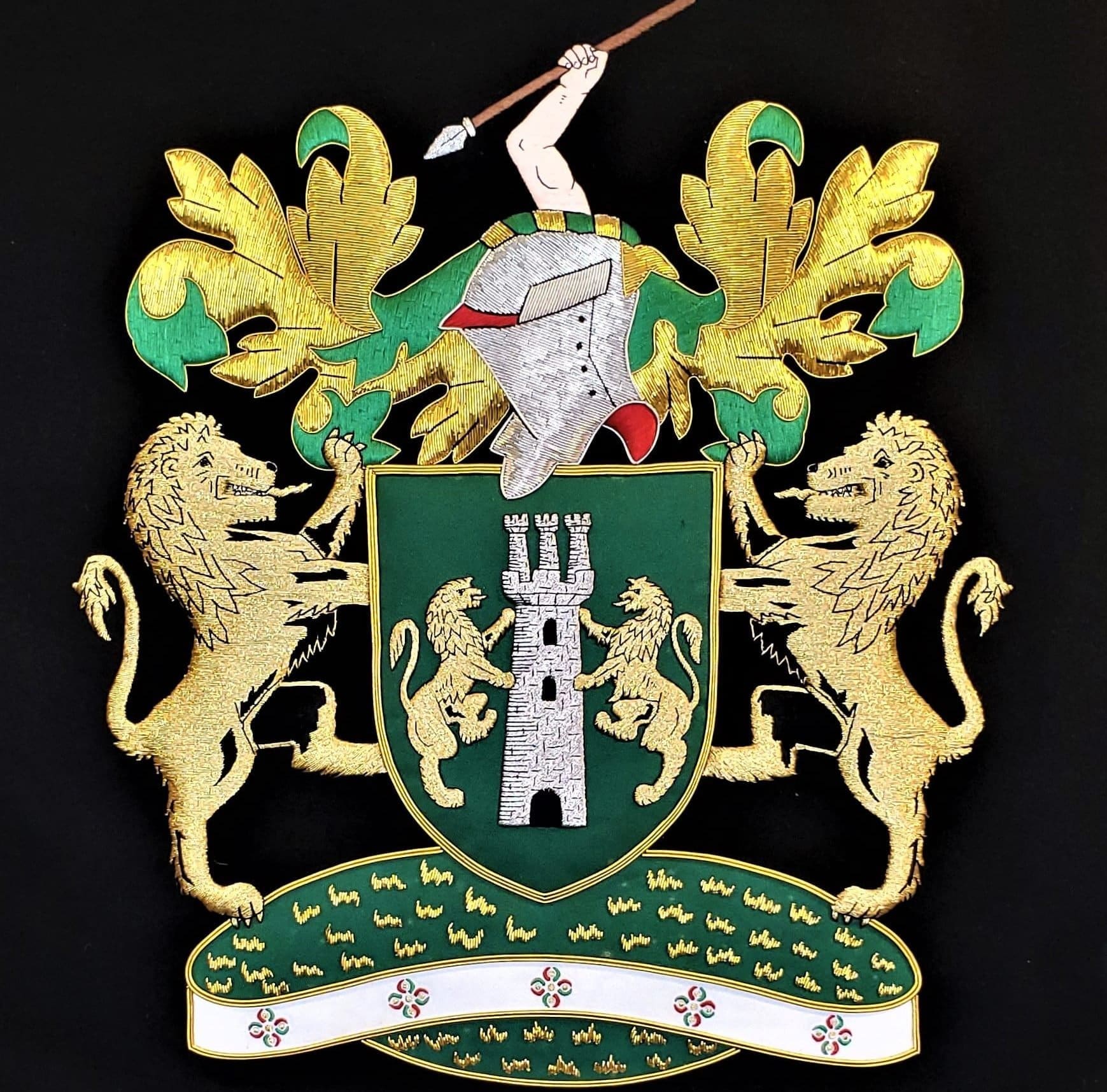Pair of Art Nouveau Hand Beaten Bronze Door Push Plates
PRESENTING a GORGEOUS AND UNIQUE Pair of Art Nouveau Hand Beaten Bronze Door Push Plates.
Each being 13.5 inches long.
Probably made in the US circa 1910 and most definitely influenced by the English New Lynn School of Arts and Crafts Era hand-beaten copper pieces.
These are without doubt Art Nouveau in style and from the period.
They were salvaged from a Mansion in Dallas that was built in 1929.
We are of the opinion that these were ‘custom made’ pieces.
They are unmarked and unsigned and they appear to be made of bronze with a brass and copper mix.
The fact that they are hand beaten bronze, is highly unusual in itself as most of these types of pieces were copper.
Also, we rescued these from the now demolished Mansion along with the MOST AMAZING and UNIQUE hand beaten Bronze Door Handles and hardware (posted separately) which likewise have no markings and are unlike ANYTHING we have seen before.
The original antique brass door hinges (posted separately) are marked as being made by “McKinney”, so it is plausible that McKinney could have made all the hardware, but we do not think so, as McKinney only appear to have sold high-end hinges.
McKinney Products:


McKinney Products Company designs and manufactures high quality architectural hinges for commercial use. With roots in Cincinnati OH, McKinney manufactured in the heart of the Pennsylvania steel industry for many years.
McKinney became an ASSA ABLOY Group company in 1996. With the resources of ASSA ABLOY, McKinney greatly expanded the research and development, and manufacturing capabilities. These capabilities have had the greatest impact on improving custom hinge manufacturing.
Established in 1865 and carried out business in Pittsburgh around the time these products were made.
Newlyn Copper was a class of arts and crafts copperware originating in Newlyn in Cornwall.
In the late 19th century the fishing industry in Cornwall was becoming unreliable as a source of income; bad weather and seasonal fluctuations brought enforced periods of inactivity. It was decided that an alternative means of employment could be gained by training the unemployed fishermen to produce items in copper.
John Drew Mackenzie, an artist who settled at Newlyn was a key figure in setting up the Newlyn Industrial Class, assisted by the benefactor and local Member of Parliament, Thomas Bedford Bolitho, and artists Reginald Dick, T. C. Gotch, Perry Craft and John Pearson. After some early experiments, the class specialised in repoussé copper work and produced a wide range of domestic and decorative items. The school remained active for about thirty years after its establishment in 1890.
Other known artists who produced work in the Newlyn style included: Herbert Dyer, Obed Nicholls, Phillip Hodder, William Pezzack, Tom Batten, John Payne Cotton, John Curnow, John Edgar Laity, George Mildren, Joe Pengelly, William P. Wright and William Tonkin.
The range of objects produced by the class including trays, mirror and photograph frames, chambersticks, plates and chargers, boxes, bowls and coffee pots: designs typically featured fish, ships and other nautical themes.
A permanent collection, representing much of the work of the original Newlyn School, is on view at the Penlee House Gallery and Museum in Penzance. Newlyn Copper is now highly valued by collectors.
Link: https://en.wikipedia.org/wiki/Newlyn_Copper
Art Nouveau (/ˌɑːrt nuːˈvoʊ, ˌɑːr/; French: [aʁ nuvo]) is an international style of art, architecture, and applied art, especially the decorative arts. The style is known by different names in different languages: Jugendstil in German, Stile Liberty in Italian, Modernisme in Catalan, and also known as the Modern Style in English. It was popular between 1890 and 1910 during the Belle Époque period,[1] and was a reaction against the academic art, eclecticism and historicism of 19th century architecture and decoration. It was often inspired by natural forms such as the sinuous curves of plants and flowers.[2] Other characteristics of Art Nouveau were a sense of dynamism and movement, often given by asymmetry or whiplash lines, and the use of modern materials, particularly iron, glass, ceramics and later concrete, to create unusual forms and larger open spaces.
Link: https://en.wikipedia.org/wiki/Art_Nouveau
Pair of Art Nouveau Hand Beaten Bronze Door Push Plates.
Provenance: From a Wealthy Dallas Mansion built in 1929.
Condition: Very good original condition. Some very minor blemishes.
Dimensions: Each is 13.5″ long, 2.4″ wide and 0.16″ thick
SALE PRICE NOW: $1,200 (Pair)
